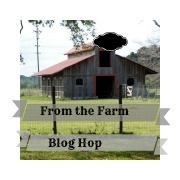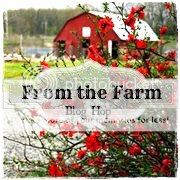Most of us depend on restaurants and grocery stores for all of our food. Without them, we'd go hungry. In an age of climate change, economic instability and a terrifying dependence on cheap oil to grow and distribute food, we leave ourselves in a precarious position. By increasing our self reliance and learning new skills, we can increase our security, eat better and have fun! Here are some ways you can take control of your food.
* Learn to cook. If you are dependent on restaurants or convenience foods, the best place to begin is to learn to cook. Start simple, start small. Learn to fry an egg. Learn to make chicken noodle soup. Progressively challenge yourself. Pinpoint your favorite restaurant meals and see if you can recreate them at home. My favorite things at a Chinese restaurant are wonton soup, egg rolls and crab rangoon. These are all really easy to make from scratch, and so I do.
* Learn to make things you think have to "come from the store". Many store-bought items can be made easily at home. Sour cream, butter, pasta, hot chocolate mix, creme fraiche, yogurt, bread, cakes, and more can be made easily. They are usually tastier when made from scratch, and often cheaper.
* Grow some herbs. Whether you want fresh herbs for cooking, or herbs to dry for medicinal teas, growing herbs is a great gateway into growing your own food. Many kinds of herbs grow well in containers or even indoors,so you can get growing even if you live in an apartment.
* Plant a fruit tree or two. If you have the space in the yard, plant some fruit trees for beauty and produce. Apple trees are a sight to see when in blossom, and you can get loads of fruit for snacking, applesauce or pies! Cherry trees are also lovely, and cherries are not cheap in the stores. It'll take a few years to provide a harvest, but then you'll get a harvest for years.
* Grow vegetables. If you have a little sunny spot in the backyard, plant something yummy. Tomatoes fresh from the garden are beyond compare. So are the hundreds of varieties of lettuce, the many varieties of radishes and carrots, peppers of all sorts, eggplants, cucumbers, and zucchini by the bushel! By growing it yourself, you control what goes in them and on them and ultimately into you. You can eat them at the peak of freshness and they don't travel 1500 miles to get to your stomach, either.
* Go to a farmers market. Not only will you find top-quality produce, but you can support small, local farmers. Sometimes you can find produce much cheaper than the grocery store, too. The best way to get great prices is to buy something that is in it's peak season. Since every booth will be offering it, the price will be lower. Ask questions and try new things.
* Get to know a good, local farmer. Whether you meet them at the market or stop by their farm stand, get to know the people who grow your food. You can then make sure that it is of a good quality. It benefits both you and the farmer to cut out all the middle men. The farmer gets a reasonable amount for the food they produce, and you get top quality veg, fresh from the earth. Look for farm stands along your work commute or near your home.
* Preserve it. When you have a surplus of a perishable food, preserve it for later when you won't have as much. During the summer and autumn months when harvests are at their peak, put up food that you grew or found a great bargain on at the farmers market. Canning is a great way to put up tomato sauce, jams, jellies, and pickles, but is intimidating for beginners. Fermenting is also a great way to extend the life of food, but again, intimidating (I still haven't gotten up the nerve to give it a go). The best intros into food preservation are freezing and drying. They are easy, quick to learn, pretty much foolproof and quite safe. Freeze peppers and onions for stir-fries and omelets. Freeze bananas and berries for smoothies. You can also freeze homemade foods. Freeze muffins and breads for later use. Freeze pancakes and waffles for a convenient breakfast food that doesn't come in a box. Dehydrating food is my favorite way to preserve. I use a dehydrator but you can also use the oven or just put them outside or in a car on a hot, dry day. Apple chips are a favorite snack food and dried tomatoes are to die for. I also dehydrate cucumbers, peppers, pumpkin, zucchini, onions, mushrooms, strawberries, plums, peaches and pears.
* Have family preserving/cooking days. If you have fruit trees that produce more fruit than your family can eat, or that you can put up alone, or if you find a great deal on a 100 pounds of tomatoes, get the family (or a group of friends) together for a day of preserving food for everyone to enjoy throughout the year. Make jams and jellies to give as holiday gifts. Cook apple sauce like my family does on our apple processing days.
* Plant some edible landscaping. If your homeowners association or zoning commission doesn't allow formal vegetable gardens, mix some edibles into the landscaping. Nasturtiums are a beautiful edible flower. Rosemary bushes can double as hedge and flavoring. Lavender is beautiful and makes a calming tea. Asparagus ferns could be worked in as a lovely background plant.
* Get a few hens for entertainment and breakfast. Nothing compares to a honest-to-goodness, fresh egg from a loved hen. The yolks are a rich orange and stand up tall and taste worlds different than that crap they sell at the grocery. If you are less queasy, you can also get into raising a few chickens (or rabbits) for meat. If you aren't caught up in the cute-fuzziness of rabbits, they can be a great source of local, ethically raised and humanely slaughtered meat.
* Get a bee hive, especially if you live in the city. Cities have a lot more flowers for the bees to visit, don't take up much space and you don't have to worry about composting their manure. In exchange for a home, access to flowers and a bit of attention, you can get honey. Sounds like a bargain to me! If you start raising bees, adapt all of your recipes to use honey instead of sugar.
* Forage for wild food. Foraging is an incredibly fun hobby, especially fun with friends or children. Pick mulberries, crab apples, wild apples, forgotten pears, acorns, walnuts, and blackberries. Learn to identify wild greens to use in cooked or fresh salads. Dandelions are my favorite wild food and can be used in many recipes, from flower fritters to bud soup to muffins.
* Speaking of dandelions, the roots can be cleaned, dried and roasted to use instead of coffee. They are earthy, nutty and slightly sweet. While most of us can't produce our own coffee (although you can roast your own!), dandelions grow all over. It's a great way to use an invasive weed, is often raised without chemicals, and as local as they come.
* Buy produce from unconventional sources such as a neighbor's produce stand by their driveway or a produce auction in farm country (these are for bulk purchases, so they pair well with family processing days or canning marathons). Approach feed stores for cheap prices on bulk oats or wheat.
* Brew your own alcohol. With practice, you can brew craft beer on a cheap-nasty beer budget. Country wines can be made with foraged or home-grown ingredients. And if you have bees, mead is definitely something fun to try.
Featured on:

Shared on:























